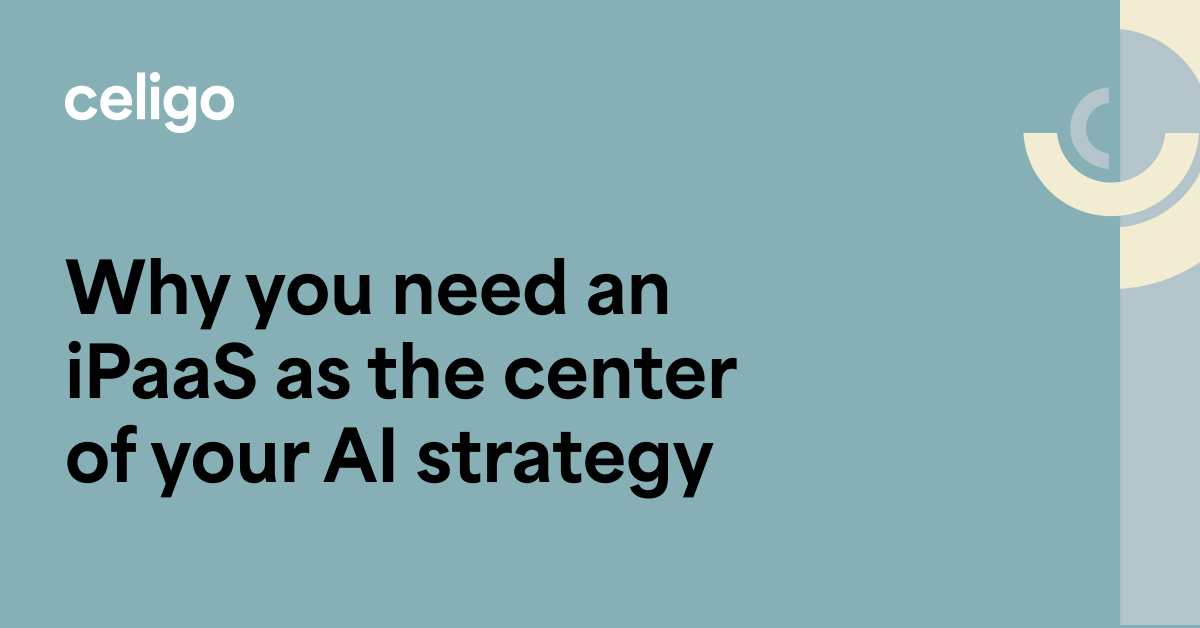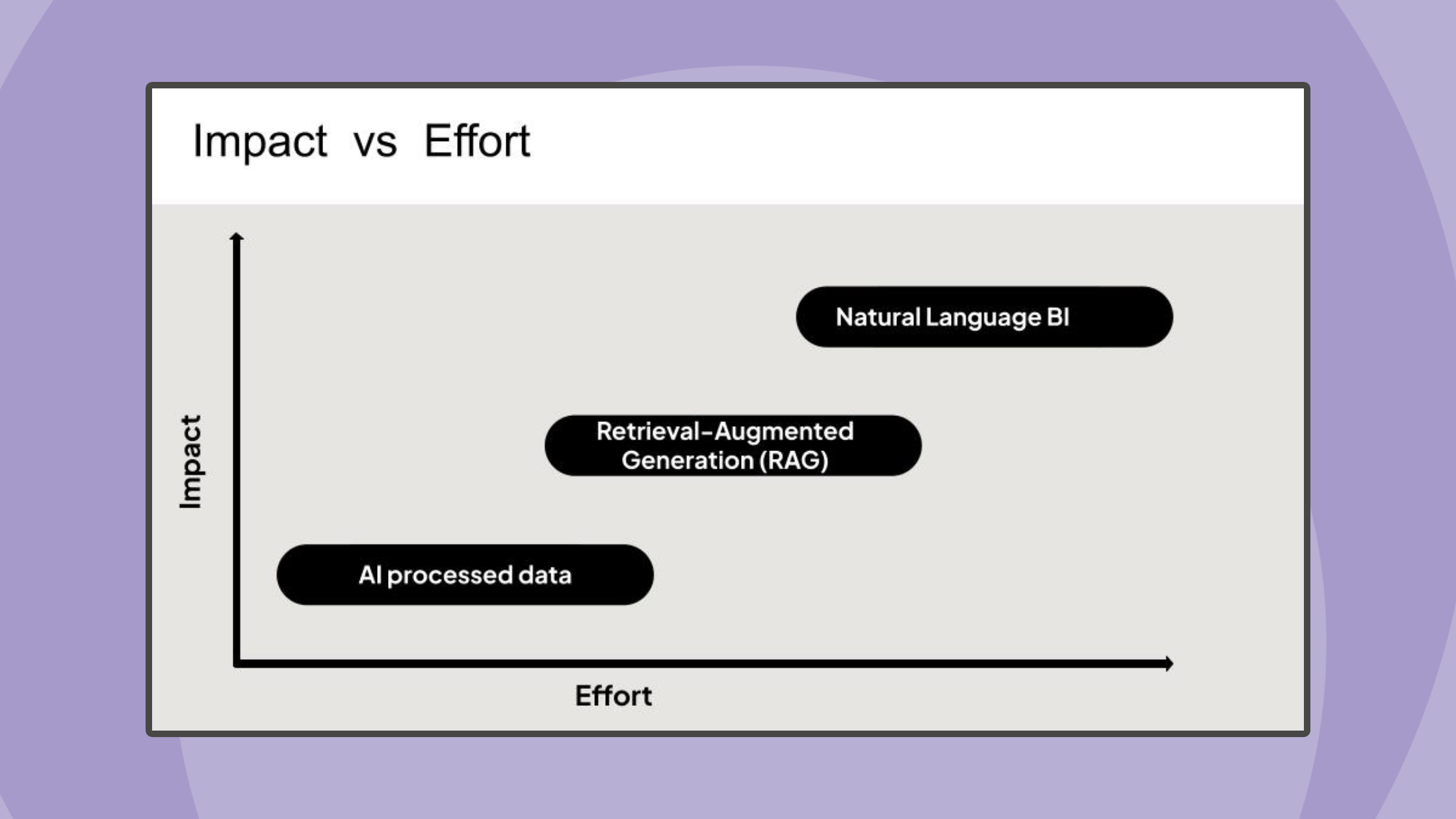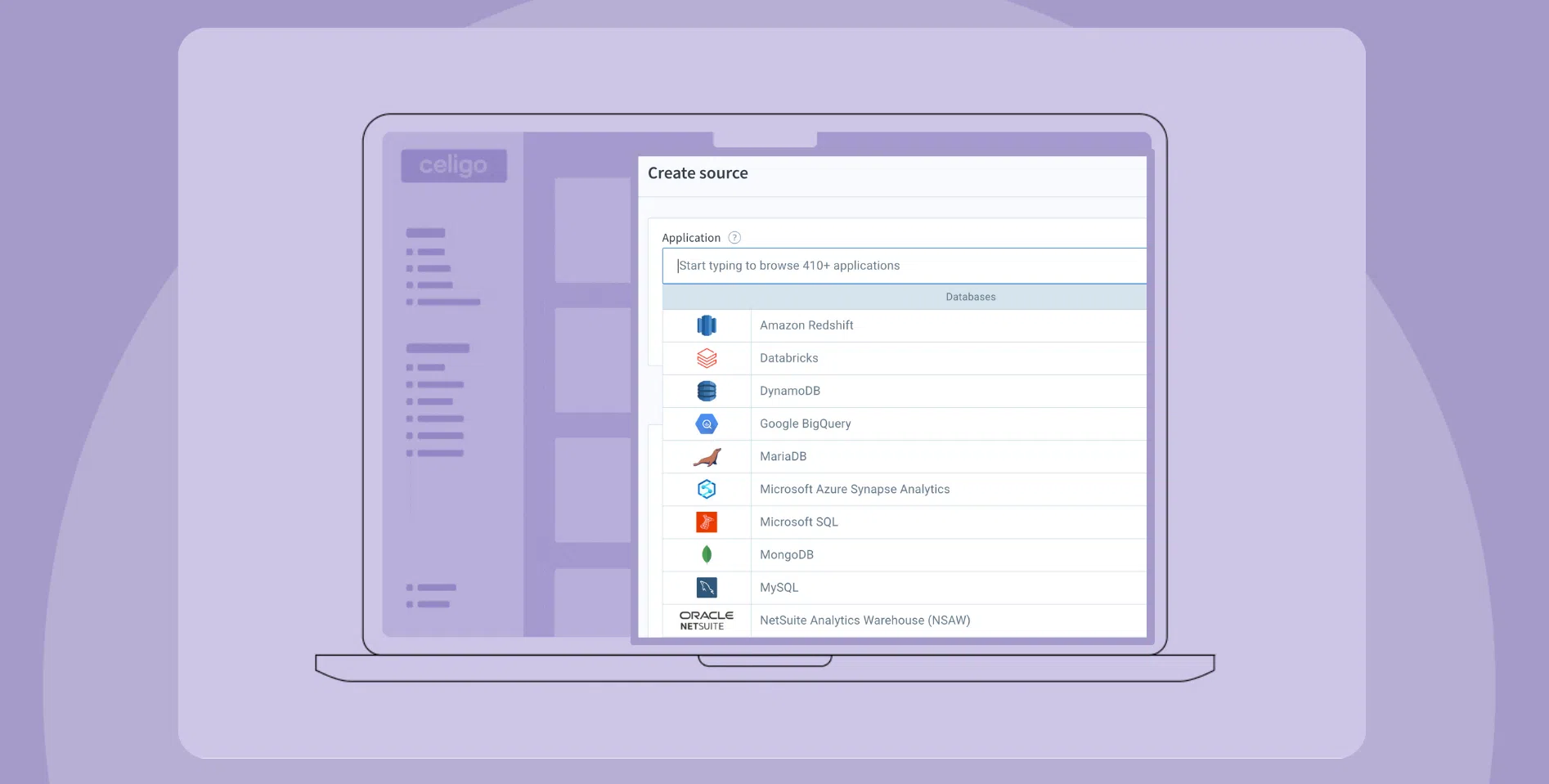Published Oct 21, 2024
The role of iPaaS in successful AI strategies

- Your AI tools are only as powerful as the data they can access.
- This makes integrating your data sources with your AI tools essential.
- With integration, you can enable AI processed data, RAG, and natural language BI.
If your organization is like 97% of businesses, you recognize that AI is critical to driving operational improvements. However, the success of your AI efforts hinges on one key factor: the data it can access.
To make the most of your investments, you need to provide your generative AI tools with holistic data—a task that’s often a challenge due to siloed systems. That’s why an iPaaS (Integration Platform as a Service) is a fundamental component of any effective AI strategy. By integrating diverse data sources with your AI systems, iPaaS enables automation, real-time insights, and workflow efficiency, allowing your AI models to perform at their best.
Learn how to jumpstart AI integration with our on-demand webinar, “Why you need an iPaaS at the center of your AI strategy.”
Here’s a look at the three main use cases we discussed.
3 key ways to leverage AI and iPaaS
An iPaaS, like Celigo, can support a broad range of AI-driven initiatives, but prioritizing core integration capabilities is essential to ensure your foundational needs are covered. By focusing on key processes first, you can build a scalable framework for AI innovation. Begin by combining AI with iPaaS in these three critical areas to drive maximum impact across your organization.
AI processed data
AI processed data is a popular use case where generative AI is used to analyze and transform information. This includes tasks like text summarization, text classification, sentiment analysis, and extraction of entities.

To achieve this, the first step is retrieving stored data, such as customer reviews, from your database. Integration streamlines this process by allowing you to automatically sync data from your data sources with your data warehouse.
Next, use an iPaaS to sync that data from your data warehouse to your AI tools. This enables AI to extract valuable insights, such as sentiment, review summaries, and departments impacted by the review.
Finally, you can transfer the processed data back to your warehouse for storage and further analysis.
Explore an example of how you can leverage AI processed data at your organization.
Retrieval-augmented generation
Retrieval-augmented generation (RAG) operates in three key steps: retrieve, augment, and generate. First, you retrieve relevant context from your data through a semantic search. Then, this context is used to augment your original query, enriching it with additional information. Finally, the AI generates a more accurate and contextually relevant response based on this enhanced query.

Before you can enable RAG, you must first compile your key data into a vector store. Vector stores are specialized databases that allow you to find relevant information quickly by identifying vectors that are similar to a query. To populate a vector store, first transfer your data from its source to your AI tool to create embeddings. Then, move the embedded data into your vector store for efficient retrieval. After you have your data in a vector store, you can enable querying from internal messaging tools.
When a user submits a query, integration automatically routes it to your AI tool to create an embedding. By connecting your AI service to your vector store, you can then retrieve the relevant vectors based on the query. From there, generate a relevant answer by syncing information back from your vector store to your AI tool. Finally, sync data between your AI and internal messaging tools to send the answer to the user.
See a real-world use case for RAG.
Natural language BI
Natural language business intelligence (BI) allows users to query structured data from databases or data warehouses using everyday language, without needing SQL (Structured Query Language) skills.

With integration, you can automatically route user query data to your data warehouse. This enables you to extract relevant metadata and sync it with your AI tools to generate a SQL query. Next, transfer the data back to your database to execute the SQL query. Once the query is complete, send the results back to the AI tool to generate a relevant response and deliver it to the user in the internal messaging system.
If the results come up empty, you can set up an additional flow to refine, update, and rerun the SQL query.
Learn more about why natural language BI is an essential use case.
Achieving AI success with Celigo
Incorporating an iPaaS at the core of your AI strategy ensures that your AI initiatives are built on a solid foundation of integrated, high-quality data. By centralizing data access, automating workflows, and orchestrating AI processes across diverse systems, an iPaaS like Celigo enhances both the scalability and accuracy of your AI models. This not only accelerates AI deployment but also optimizes performance, enabling your organization to harness the full potential of AI for better decision-making, improved customer experiences, and increased operational efficiency.
Simply put, an iPaaS is the engine that drives effective AI implementation. See what AI and iPaaS can do for you, watch the full webinar.




